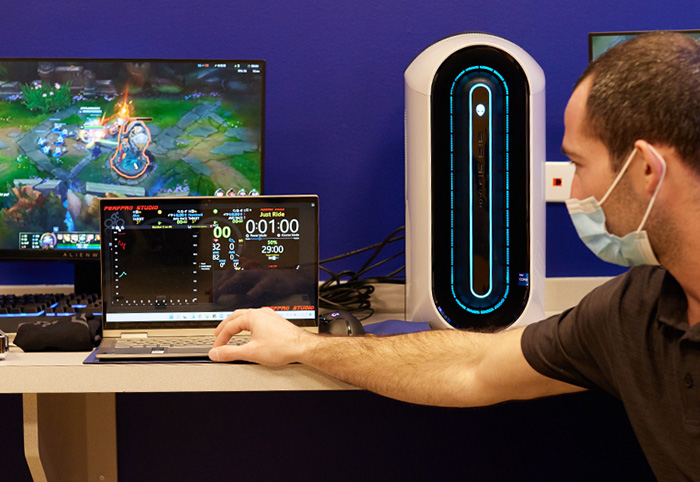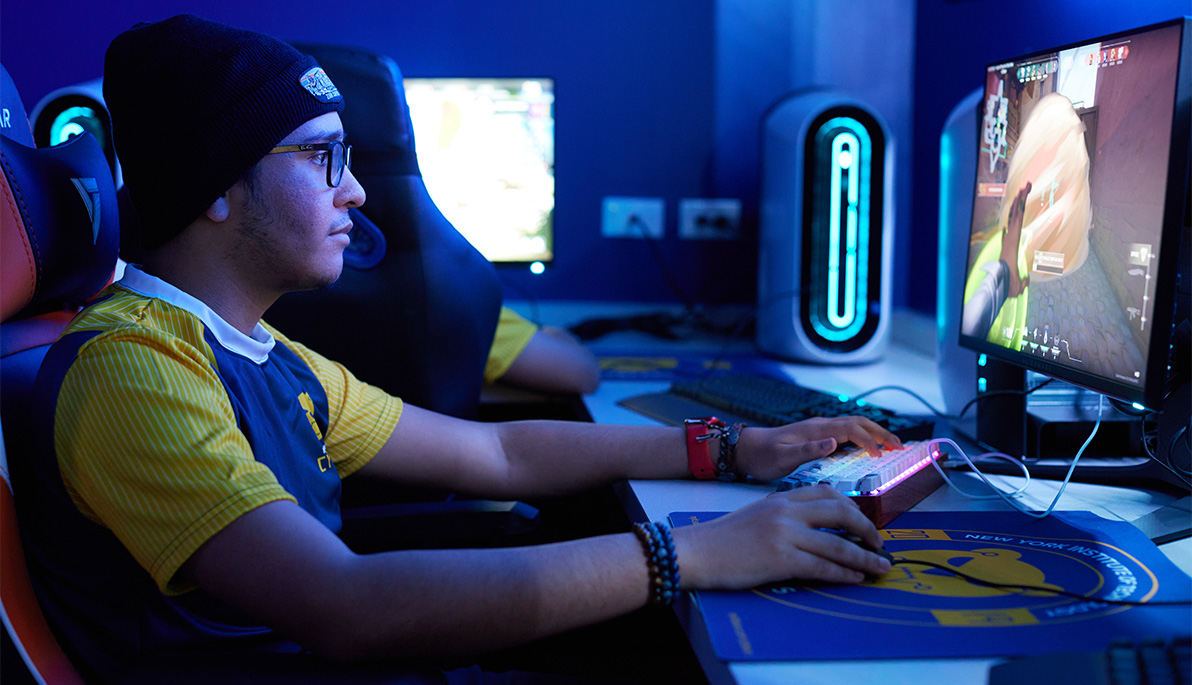News
New York Tech’s Center for Esports Medicine Partners with Fnatic
December 14, 2021
New York Institute of Technology’s Center for Esports Medicine has partnered with the global esports organization Fnatic for a research collaboration that will explore how compression sleeves impact the body and possibly aid in gaming performance. Findings could inform the development of future Fnatic products.
While compression wear is commonly worn by traditional athletes looking to improve performance and facilitate muscle recovery, gamers may also reap these benefits. However, existing research has not explored compression wear’s effects in esports athletes.
Over six months, experts from New York Tech’s Center for Esports Medicine will conduct two studies to analyze how, exactly, compression sleeves may impact competitive gaming performance:
- A lower-body study will examine whether compression sleeves worn on the leg can enhance blood flow and reduce the risk of long-term, lower-body health risks such as blood clots.
- An upper-body study will assess whether compression sleeves worn on the arm can improve performance longevity and improve muscle recovery.
The outcomes will be shared with Fnatic’s High Performance Unit, a team of sports scientists who assess and leverage data to inform the creation of Fnatic’s physical and digital products.
“For both collegiate and professional gamers, preventing health risks and injury is key to maintaining a long and successful esports career. Just as basketball players or runners use compression wear to improve their performance and facilitate muscle recovery, gamers can likely benefit from these garments,” said Joanne Donoghue, Ph.D., associate professor and director of clinical research at the College of Osteopathic Medicine. “We aim to demonstrate the impact of compression sleeves on blood flow, muscle oxidation, and other functions that are critical to competitive esports performance.”
Donoghue, who is also an exercise physiologist and integral member of the Center for Esports Medicine research team, will oversee both studies. Other New York Tech experts involved include Coordinator and Instructor for the Exercise Science, B.S. program Alexander Rothstein, M.S., Associate Professor of Physical Therapy William Werner, Ed.D., P.T., Biostatistician Min-Kyung Jung, and Assistant Dean of Clinical Operations Hallie Zwibel, D.O., who also serves as director of the Centers for Sports Medicine and Esports Medicine.

Researcher Alexander Rothstein, M.S. analyzes muscle oxygenation during gameplay.
Lower-Body Study: “The impact of foot and lower leg compression wear on endothelial function and blood flow in extended video game play in competitive gamers”
Traditionally, clinicians have used compression wear to reduce patients’ risk of deep vein thrombosis (DVT), a blood clot formed within a deep vein. A sedentary lifestyle is a risk factor for DVT, as muscles do not contract and relax to help circulate blood during long periods of sitting.
Given this, competitive esports athletes, who often spend the majority of their time sitting in front of a screen, may benefit from wearing compression garments. A 2019 study by the center found that the average collegiate gamer sits for four to eight hours per day. Although DVTs are uncommon, other studies have even shown that gamers have nearly double the risk of developing a blood clot incident vs. non-gamers.
Now, the center’s experts will analyze whether compression sleeves worn below the knee can enhance blood flow and reduce the risk of long-term, lower-body health risks, like blood clots. Ten healthy collegiate gamers will sit and play for two hours while an ultrasound machine is used to collect endothelial (inner blood vessel) data, including blood flow velocity, artery-widening, and shear rate (the force of blood flow on the vessel wall).
In addition, existing research shows that breaking up prolonged periods of sitting with walking can benefit vascular blood flow. Accordingly, the study will also have a walking component and will compare the vascular benefits of sedentary playing with walking breaks (no compression sleeve) vs. sedentary playing with a lower-body compression sleeve (no walking breaks). The study also builds on previous research published by the center in BMJ Open Sport & Exercise Medicine, which found that walking breaks can improve gamers’ processing speed and executive function.
Data will be collected in a randomized order on three separate days: one day in which gamers play without the compression sleeve, another day in which they play while wearing the sleeve, and a third day in which they play without the sleeve and break up playing time with a six-minute walk.
Overall, the researchers expect that the lower leg compression sleeve will significantly improve blood flow velocity and reduce stress within the blood vessels.
Video created by Fnatic
Upper-Body Study: “The impact of upper-body compression wear on muscle tissue oxygen saturation during extended video gameplay in competitive gamers”
Competitive gamers perform between 500 and 600 mouse and keyboard actions per minute on a typical training day, which usually lasts from five to ten hours of play with no break.
In comparison, office workers perform an average of 130 to 180 keyboard and mouse inputs over the course of an eight-hour workday. With such intense fine motor demands, esports players commonly experience overuse injuries, particularly in the wrist and fingers. However, little research has been conducted to measure these muscles’ oxygen demands during periods of prolonged gaming. Given this, Center for Esports Medicine researchers will measure how oxygen demands in the wrist extensor and finger muscles change when gamers wear an arm compression sleeve.
The team will measure the balance between oxygen delivery and oxygen consumption in the muscles using the biomarker “SmO2,” an indicator for muscle exertion. When SmO2 drops and muscles lose oxygen, individuals experience muscle fatigue.
Ten healthy collegiate players will wear the compression sleeve on their dominant arm (from upper arm to wrist) while sensors monitor SmO2 levels in the extensor carpi radialis, an outer forearm muscle that controls wrist movement while gaming. The players’ SmO2 levels will be evaluated during bouts of high-intensity interval grid shot training, with and without the sleeve. Gamers will also be asked to rate their perceived exertion, comfort level, and performance.
The researchers hypothesize that upper-body compression garments will allow muscles to retain oxygen longer, improving gamers’ recovery.





